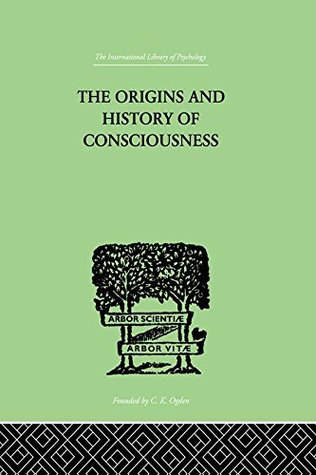More on this book
Community
Kindle Notes & Highlights
Read between
November 22, 2018 - April 14, 2019
synoptic
the conscious system has absorbed more and more unconscious contents and progressively extended its frontiers.
collective. Indeed, creative individuals possessed of a stronger consciousness are even branded by the collective as antisocial.
The creativity of consciousness may be jeopardized by religious or political totalitarianism, for any authoritarian fixation of the canon leads to sterility of consciousness.
For this reason analytical psychology considers the structure of the psyche to be determined by a priori transpersonal dominants—archetypes—which, being essential components and organs of the psyche from the beginning, mold the course of human history.
It is one of the tasks of this book to show that, in regard to these and similar “complexes,” we are really dealing with symbols, ideal forms, psychic categories, and basic structural patterns whose infinitely varied modes of operation govern the history of mankind and the individual.
We have also to realize that the false, personalistic interpretation of everything psychic is the expression of an unconscious law which has everywhere constrained modern man to misinterpret his true role and significance.
Only when we have made it clear to what degree the reduction of the transpersonal to the personal springs from a tendency which once had a very deep meaning, but which the crisis of modern consciousness has rendered wholly meaningless and nonsensical, will our task be fulfilled. Only when we have recognized how the personal develops out of the transpersonal, detaches itself from it but, despite the crucial role of ego consciousness, always remains rooted in it, can we restore to the transpersonal factors their original weight and meaning, lacking which a healthy collective and individual life
...more
If, on the other hand, transpersonal contents are reduced to the data of a purely personalistic psychology, the result is not only an appalling impoverishment of individual life—that might remain merely a private concern—but also a congestion of the collective unconscious which has disastrous consequences for humanity at large.
world become conscious of themselves and of their dignity.
The psyche blends, as does the dream; it spins and weaves together, combining each with each.
Even today we can see from primitives that the law of gravity, the inertia of the psyche, the desire to remain unconscious, is a fundamental human trait.
Wherever the incest motif appears, it is always a prefiguration of the hieros gamos, of the sacred marriage consummation which attains its true form only with the hero.
Many forms of nostalgia and longing signify no more than a return to uroboric incest and self-dissolution, from the unio mystica of the saint to the drunkard’s craving
for unconsciousness and the “death-romanticism” of the Germanic races. The incest we term “uroboric” is self-surrender and regression. It is the form of incest taken by the infantile ego, which is still close to the mother and has not yet come to itself; but the sick ego of the neurotic can also take this form and so can a later, exhausted ego that creeps back to the mother after having found fulfillment. Notwithstanding its own dissolution and the deadly aspect of the uroboros, the embryonic ego does not experience uroboric incest as anything hostile, even though it be annihilated. The return
...more
The effect of secondary personalization in the struggle against paganism was to reduce the transpersonal to the personal.
creative spirit.
the image of the procreative wind-ruach-pneuma-animus, which animates through “inspiration.”
Although the ego experiences—and must experience—the uroboros as the terrible dark power of the unconscious, mankind does not by any means associate this stage of its preconscious existence only with feelings of dread and drowsiness.
Bachofen,
So far we have distinguished three stages of uroboric autarchy: the first is the pleromatic stage of paradisal perfection in the unborn, the embryonic stage of the ego, which a later consciousness will contrast with the sufferings of the nonautarchic ego in the world. The second stage is that of the alimentary uroboros, a closed circuit whose “own waste provides its own food.” The third, genital-masturbatory phase is that of Atum “copulating in his own hand.”
In many cases, therefore, the appearance of uroboric symbolism, especially if its formative and stabilizing character is strongly marked, as, for instance, in the mandala, indicates that the ego is moving toward the self, rather than in the direction of objective adaptation.
Detachment from the uroboros, entry into the world, and the encounter with the universal principle of opposites are the essential tasks of human and individual development. The process of coming to terms with the objects of the outer and inner worlds, of adapting to the collective life of mankind both within and without, governs with varying degrees of intensity the life of every individual. For the extravert, the accent lies on the objects outside, people, things, and circumstances; for the introvert, it lies on the objects inside, the complexes and archetypes. Even the introvert’s
...more
Thus the Great Round of the uroboros arches over man’s life, encompassing his earliest childhood and receiving him again, in altered form, at the end.
It is, however, this same figure whose clinging embrace prevents the neurotic from being born into life.
Vital components in the growth of the ego and in the evolution of consciousness, culture, religion, art, and science spring from the urge to overcome this fear by giving it concrete expression.
and the narcissistic personality.
and evidently somewhat incongruous, feature
We cannot concern ourselves here with the motif of the two brothers or with the motif of self-propagation, nor yet with the extent to which this fairy tale belongs to the later stage of the fight with the dragon and conflict with the male principle. We would only point out its connection with the Osiris myth and with the figure of the Terrible Mother who lurks behind Isis, the good wife and mother.


